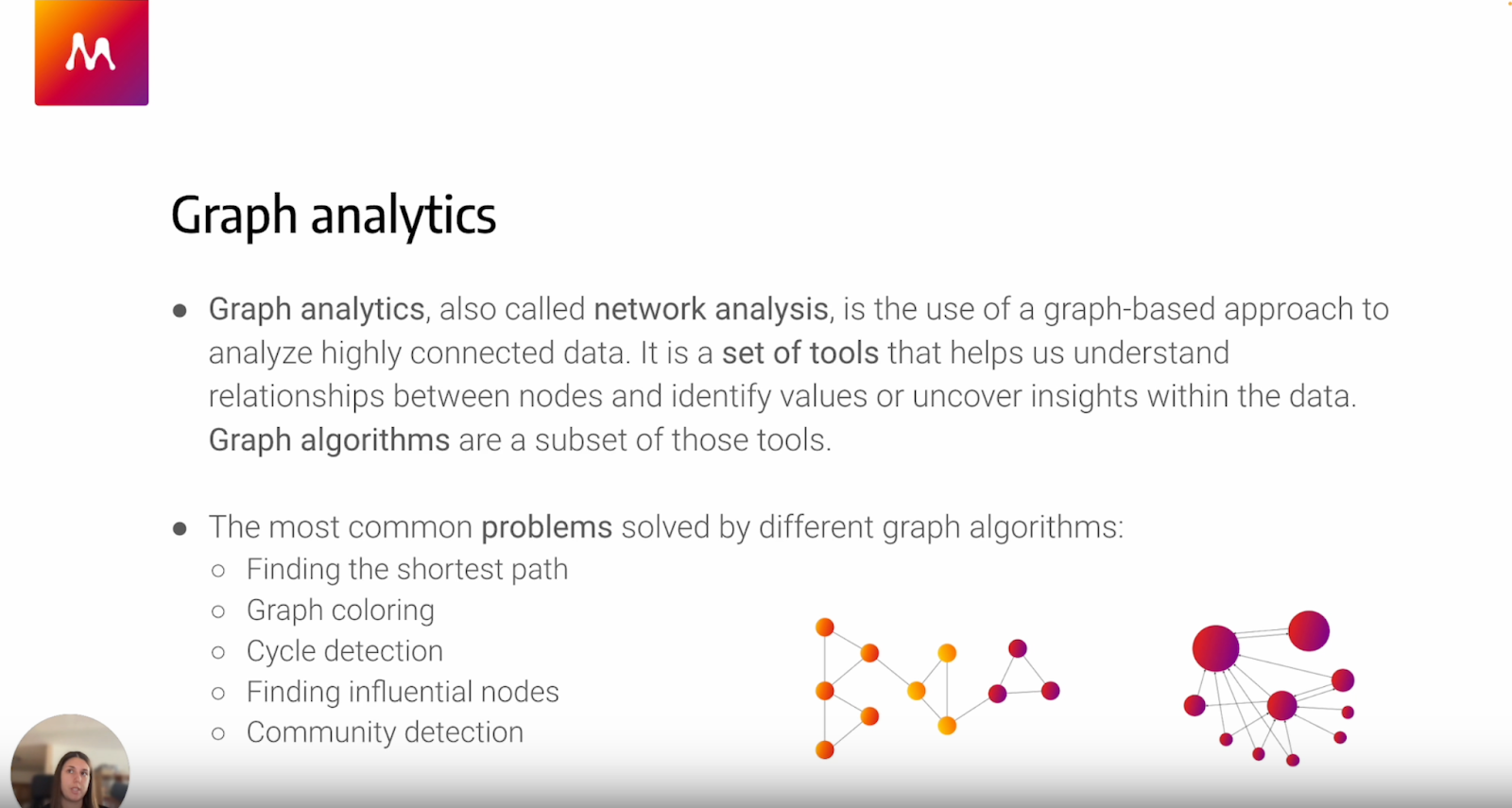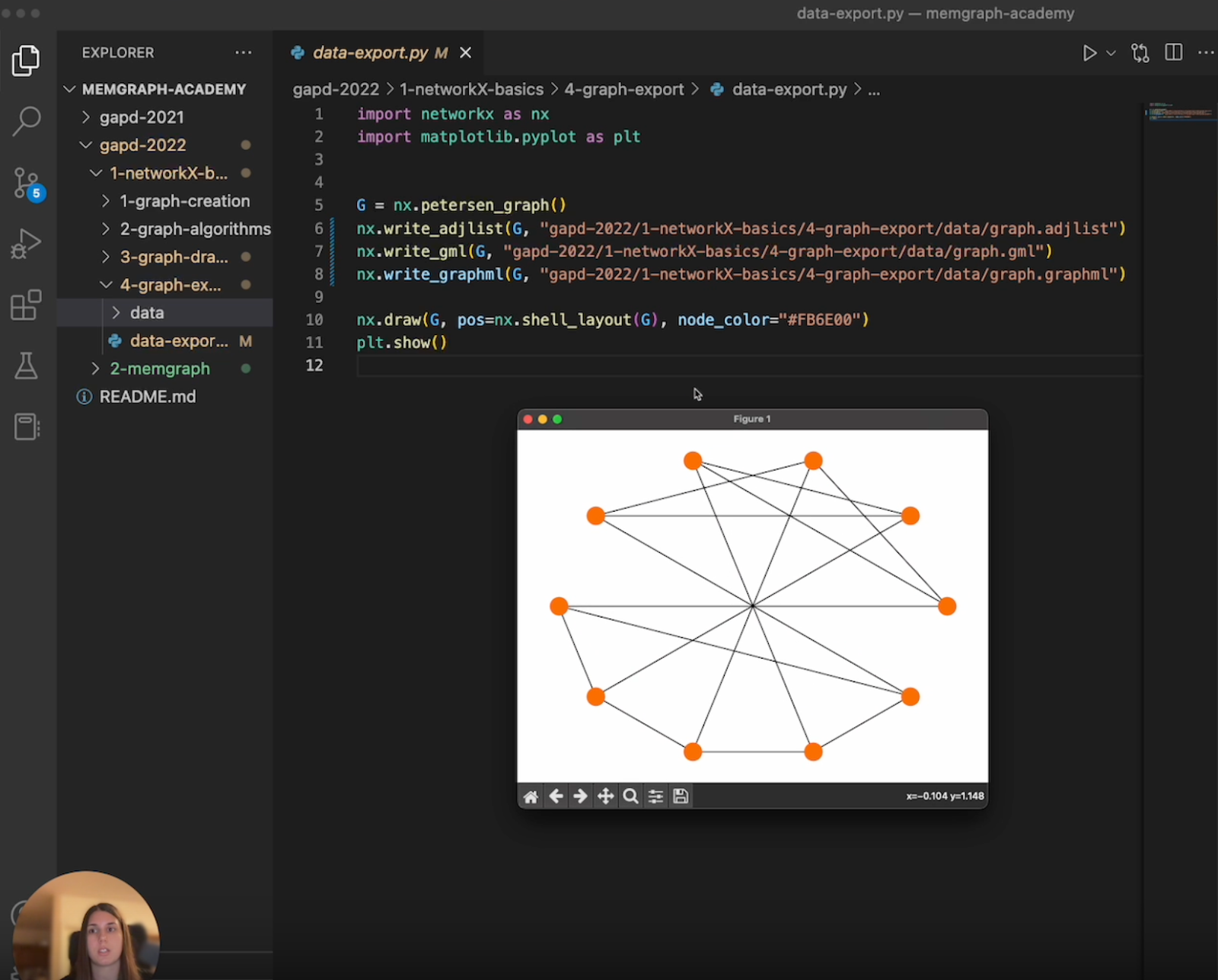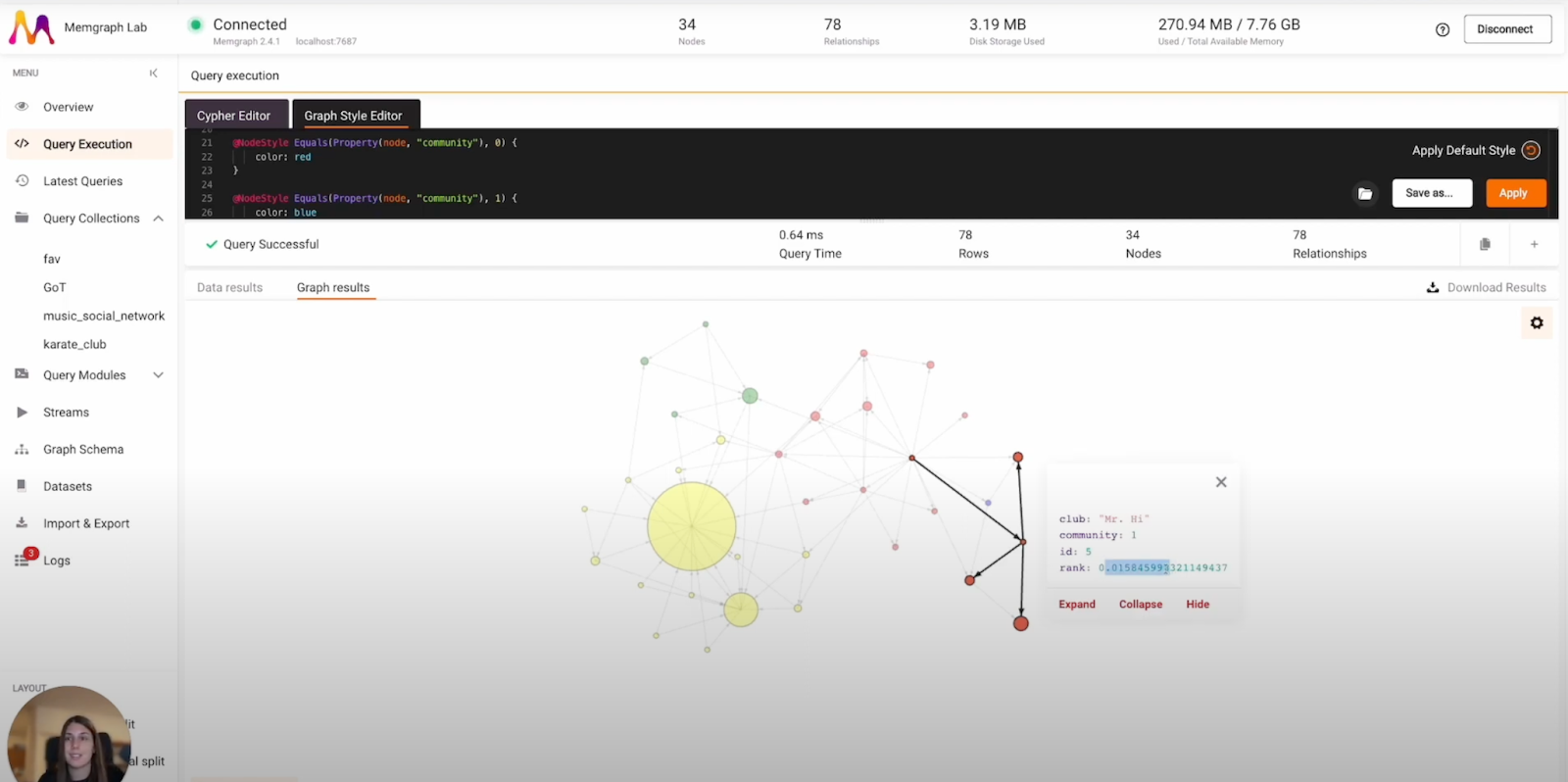
Learn Graph Analytics With Python
Graphs are a way to represent a network or a collection of interconnected objects formally. There are many powerful tools out there to explore that kind of network by applying graph algorithms. But sometimes it’s hard to keep track of them!
We have created a brand new course to get you familiar with the graph world. The course is designed for Python developers who want to explore tools for network analysis and see how it’s done hands-on. You will learn what graph algorithms are and hear more about the most popular ones.
If you are not an experienced Python developer, don’t worry - this course will teach you the basics of graph analytics, and you’ll be able to apply that knowledge whenever you become more familiar with Python.
The tools which we explored in detail are NetworkX, a Python package for the creation, manipulation and study of the structure dynamics and functions of complex networks. Another tool is called Memgraph, a graph database, through which we’ll explain the benefits of using graph storage. If all of the above sounds intriguing and you don’t want any spoilers, skip this blog and sign up for the free course!
Hello graph world
Graphs can come in many forms, depending on the tool which implements them. Also, there are different types of graphs depending on the type of data stored inside such objects. You’ll learn the basics of the graph world and hear about graph databases.
To get insights from the graphs, you need to perform graph analytics. It is essential to understand what kinds of algorithms are out there and when to use them. There are many different graph use cases, and we will discuss the most common ones.

All of that is simple enough in theory, but when you, as a Python developer, actually need to get the most out of your data, it is important to find a tool that is powerful but simple to use. One of the most famous such tools is called NetworkX.
NetworkX - a Python graph analytics tool
Through this course, you will have an opportunity to see many code examples explaining NetworkX features. You will see how it’s easy to create a simple graph from scratch, explore it and visualize it.

NetworkX comes with included graph algorithms, and it is a tool that many researchers use. Besides all of its advantages, we are going to investigate the biggest challenges when working with big or dynamic graphs regarding analysis speed, memory consumption and quick visualizations.
Memgraph - a Python-friendly graph database
Memgraph offers data persistency, large-scale data analytics and visualizations, so it is an excellent NetworkX alternative. You may ask yourself - why a graph database? We are going to answer that and many other questions in this section of the course.

But you don’t have to give up on NetworkX to use a graph database totally. With the on hands part of the course, you will see how to transform a NetworkX graph into a Memgraph graph. Besides that, Memgraph holds a set of NetworkX algorithms, along with its own, in a library called MAGE.
Conclusion
Enough spoilers! Sign up for the free course and cover all the listed topics and more. After the course, you will be able to brag to all of your LinkedIn friends about how you became a graph master. :)